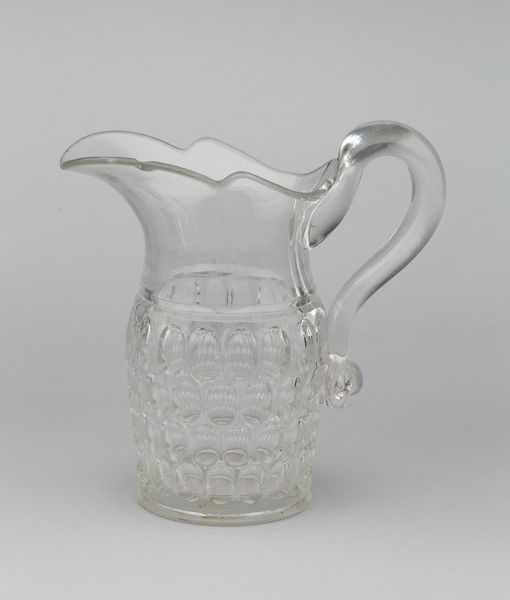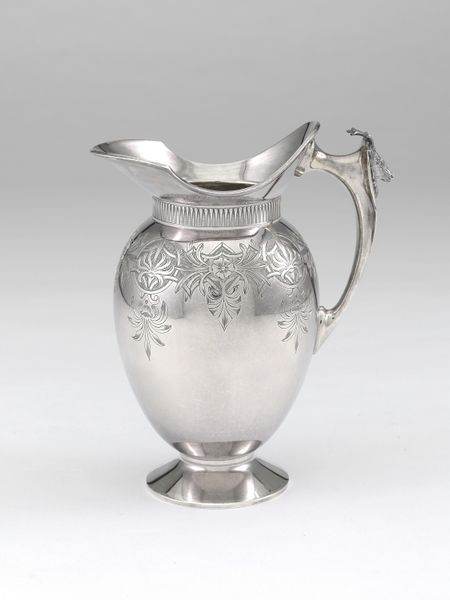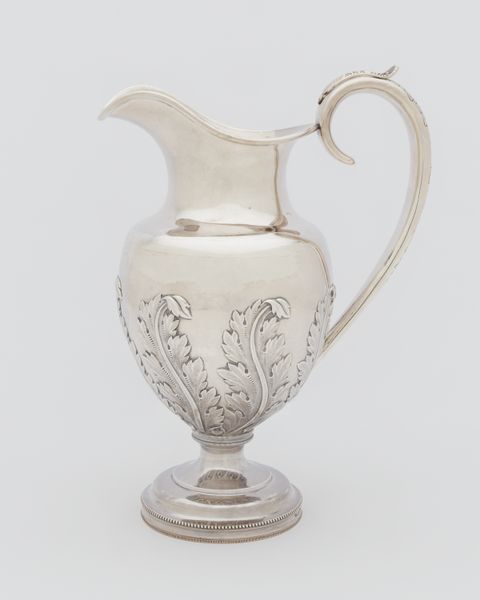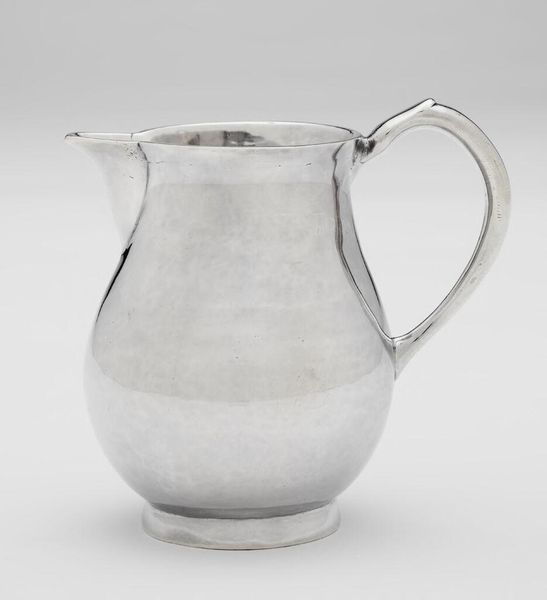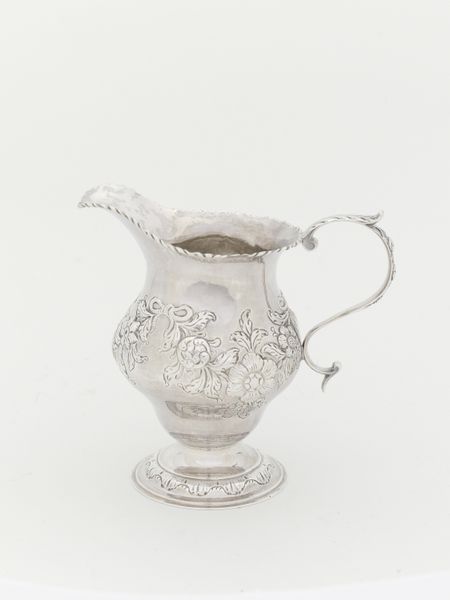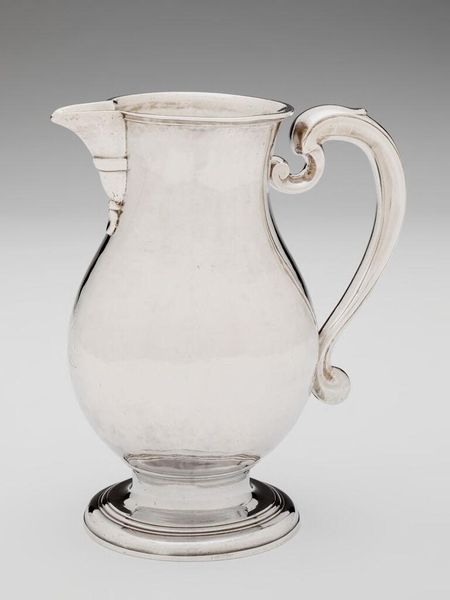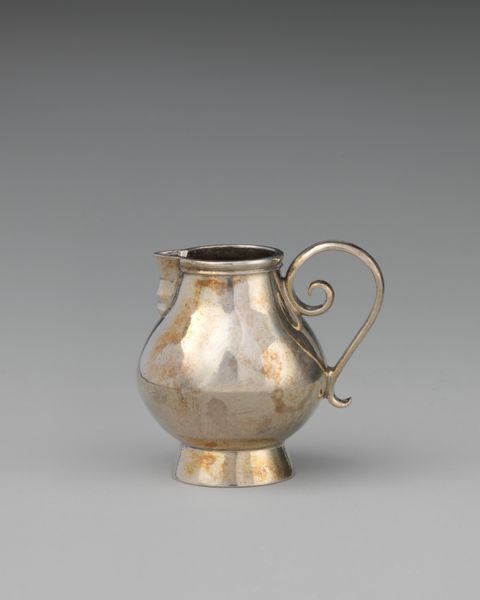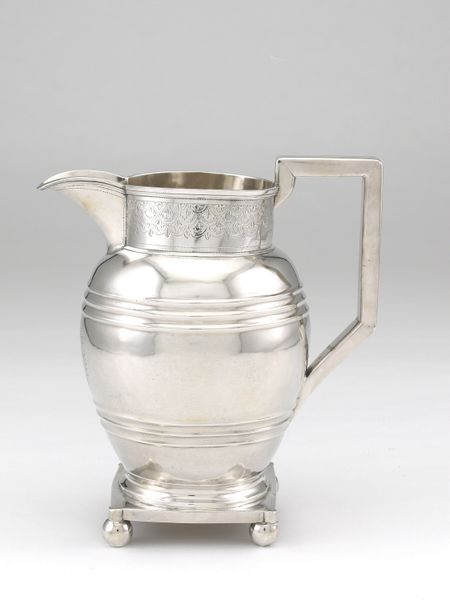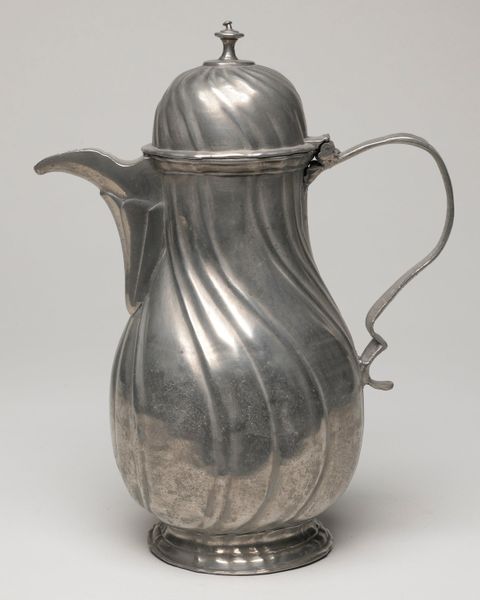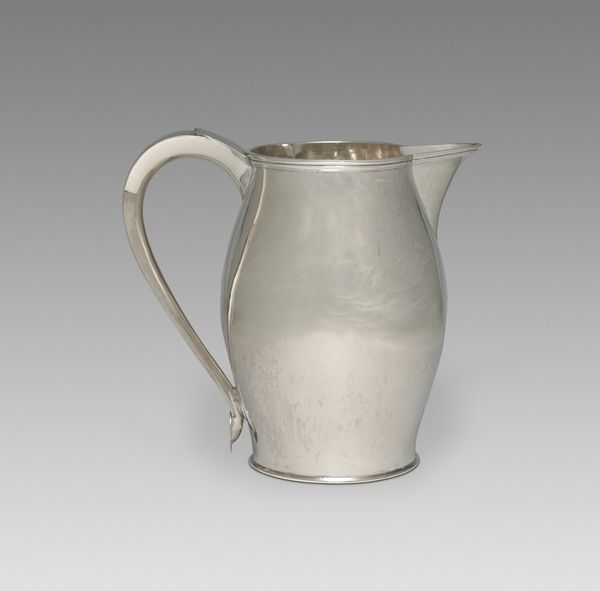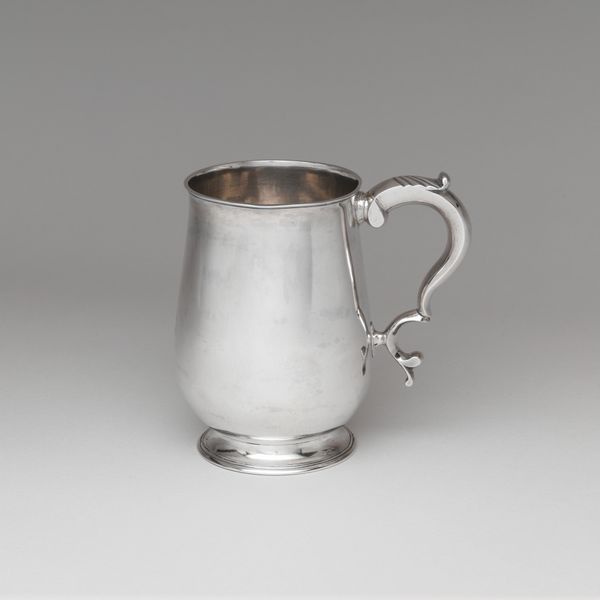
Dimensions: height 18 cm, width 19 cm, depth 15.2 cm
Copyright: Rijks Museum: Open Domain
Curator: Before us stands an intriguing object created by Tiffany & Co. between 1873 and 1874. It’s described as a water jug, adorned with plant and floral motifs. Editor: It’s quite striking. The hammered metal gives it a textured, almost organic feel that’s softened by the engraved natural elements. A rather hefty piece. Curator: Indeed. The very materiality points toward the Arts and Crafts movement, a deliberate turn away from industrial mass production towards handcrafted objects and natural motifs, signaling a reformist ideal. This jug blends aesthetic refinement with utility, typical of the movement’s values. Editor: I’m drawn to that insect figure clinging to the side of the jug. It's a compelling feature amidst the more traditional floral and leaf patterns. A subtle disruption. What’s the purpose of including the creature? Curator: The incorporation of insects, often grasshoppers or crickets, in Japanese-inspired designs was popular at the time, representing nature's small, yet integral place within a larger ecological context. Its inclusion blurs the boundaries between art, design, and the natural world. The choice could also critique societal hierarchy. After all, a creature we often perceive as insignificant has been given a permanent place of artistic merit. Editor: So, you’re saying the addition democratizes design by featuring the overlooked? Given Tiffany & Co’s commercial success at the time, was this choice meant as commentary to societal inequalities? Curator: Certainly! Understanding such an element requires an acknowledgement of race and gender at the time. Although beautiful, Tiffany & Co benefited and exploited laborers along the path of progress. Editor: Interesting. Considering its metallic makeup and decorative artistry, this object stands as a functional item, an aesthetic expression, and a possible statement about labor and class relations. Curator: Agreed. The water jug is beautiful, of course, but only reveals a truly captivating narrative when we consider its societal complexities. Editor: It highlights that the means of production can convey cultural narratives—luxury can intersect and contradict with commentary. Thank you for the insights!
Comments
No comments
Be the first to comment and join the conversation on the ultimate creative platform.


